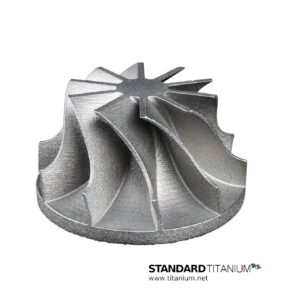An Well-known Apple analyst published a research stating on July 17, pointing out that CNC has risen significantly since Apple began to adopt it, and 3D printing is likely to replicate this success. Titanium is the most commonly used metal in 3D printing production, with numerous applications including medical, aerospace and so on. Because titanium has a higher unit price, 3D printing titanium products are more cost-effective.

- Titanium alloy has made significant development in consumer electronics applications, and polishing equipment is a sure bet. The folding screen V2 released by Honor,it is the first large-scale usage of titanium alloy technology, which is largely used to reduce the overall thickness and weight of folding screen reel gadgets. Furthermore, Apple has a large number of titanium alloy patents that have been in use for a long time. According to Patently Apple, Apple owns a total of eight patents related to titanium alloy materials, and the high-end version of the iPhone15 is known as the Ultra series, just like the titanium series of Apple Watch. Titanium alloy processing is now based on cutting and grinding, with 3D printing being the new process path; nevertheless, once the first two processes are accomplished, grinding is the only option.
- Cutting and grinding of titanium alloy: the processing difficulty is more than aluminum alloy, and the equipment demand is higher under the same conditions.
Titanium alloys are tough to work with and produce a low yield. Because of its great strength, poor heat conductivity, and high chemical activity. In terms of processing difficulty, titanium alloy has a relatively high machining difficulty. As a result, under the same number of work pieces and working hours requirements, such as cutting and grinding technology, the demand for titanium alloy equipment is greater than that for aluminum alloy. In terms of equipment and tools, most titanium alloy products are currently processed using cutting grinding processing technology, with the processing equipment mostly consisting of CNC drilling and tapping centers, grinding machines, and so on. PCD (diamond) and CBN (cubic boron nitride) materials are ideal for tools and abrasives.
- Metal 3D printing: a new direction for titanium alloy processing, which needs to be combined with the polishing process of CNC machine tools.
3D printing, often known as additive manufacturing, is a technology for rapid prototyping. It is based on a three-dimensional model of the parts to swiftly create, does not require a particular mold, uses powdered metal materials, and prints the object layer by layer; it has the features of high convenience, high precision, and low cost. Metal 3D printing faults can be effectively eliminated using the hot isostatic pressing (HIP) procedure. Hot isostatic pressing in the field of titanium alloy can effectively improve the mechanical properties of titanium alloy work piece, reduce titanium alloy cost, improve production efficiency, and material usage. The 3D printer is the primary piece of equipment for metal 3D printing.
